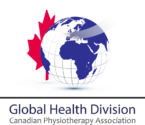GHD Blog: Barriers to Physiotherapy Services
March 20, 2021
by: Matthew Silva, Western University, Year 1
As physiotherapists, it is important to acknowledge that there is inequality between populations in accessing and receiving health care services. As advocates for global health, we must recognize that these barriers exist and disproportionately affect certain populations, and we must strive to achieve equal access for health care in Canada and across the globe. In this post, we will briefly explore some existing barriers to health care.
Socioeconomic Barriers
- Patients with a low income or a lower socioeconomic status are more likely to suffer from anxiety, have higher pain ratings, and poorer quality of life scores (Wong et al., 2018).
- Cost barriers to health care may be associated with poorer outcome scores, recovery, and quality of life, as well as a higher risk of rehospitalization (Rahimi et al., 2007).
Cultural Barriers
- Patients who don’t speak their country’s native language have been found to have difficulty communicating their needs to health care providers and, therefore, have increased difficulty in accessing the appropriate health care services and quality care (Uba, 1992).
Structural Barriers
- In rural and northern communities, health care facilities are sparsely located and residents may have difficulty obtaining care. In addition, infrastructure, such as roads and highways, may not be present or well-maintained and patients or care providers may need to be flown in to facilities (Huot et al., 2019).
- Rural residents may be more reluctant to seek care due to the lack of accessible services, trained care providers, poor transportation methods, and inadequate internet coverage, and were found to have worse health outcomes (Douthit et al., 2015).
As health care professionals, it is our duty to recognize that these inequalities exist. Our role is to educate others regarding this issue, advocate for solutions, be aware of our patients’ situations, and be aware of our own subconscious biases in practice.
Douthit, N., Kiv, S., Dwolatzky, T., & Biswas, S. (2015, June). Exposing some important barriers to healthcare access in the rural USA. Public Health, 129(6), 611-20. doi:10.1016/j.puhe.2015.04.001
Huot, S., Ho, H., Ko, A., Lam, S., Tactay, P., MacLachlan, J., & Raanaas, R.K. (2019, December). Identifying barriers to healthcare delivery and access in the Circumpolar North: important insights for health professionals. Int J Circumpolar Health, 78(1), 1571385. doi: 10.1080/22423982.2019.1571385
Rahimi, A., Spertus, J., Reid, K., Bernheim, S., & Krumholz, H. (2007, March 14). Financial Barriers to Health Care and Outcomes After Acute Myocardial Infarction. Multicenter Study, 297(10), 1063-72. doi: 10.1001/jama.297.10.1063
Uba, L. (1992, September-October). Cultural barriers to health care for southeast Asian refugees. Public Health Reports (Washington, D.C. : 1974), 107(5), 544-548.
Wong, S.Y., Chung, R.Y., Chan, D., Chung, G.K., Li, J., Mak, D., Lau, M., Tang, V., Gordon, D., & Wong H. (2018, November 14). What are the financial barriers to medical care among the poor, the sick and the disabled in the Special Administrative Region of China? PLoS ONE, 13(11), e0205794. doi:10.1371/journal.pone.0205794
Become a member
LoginBecome a member
Login